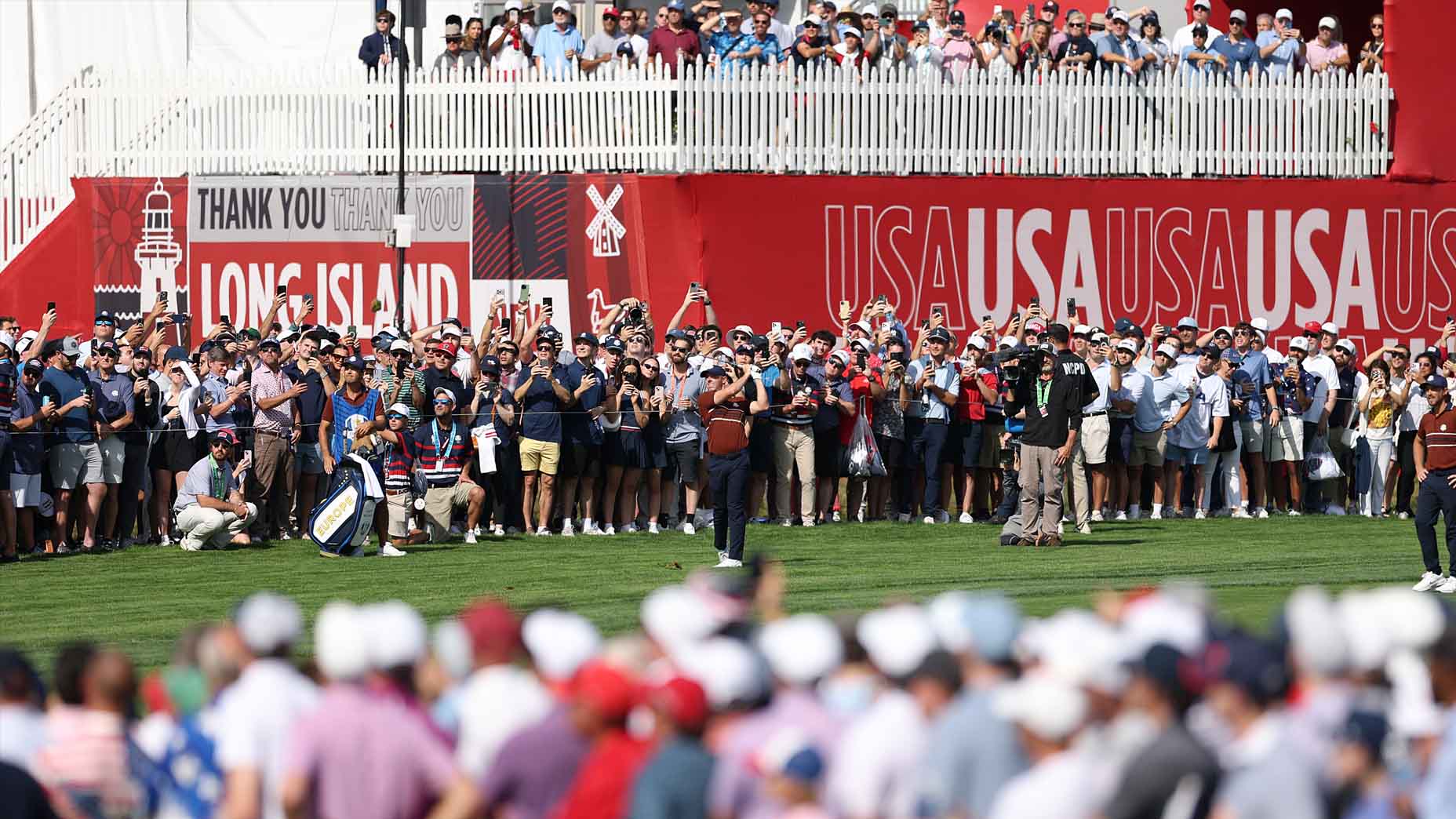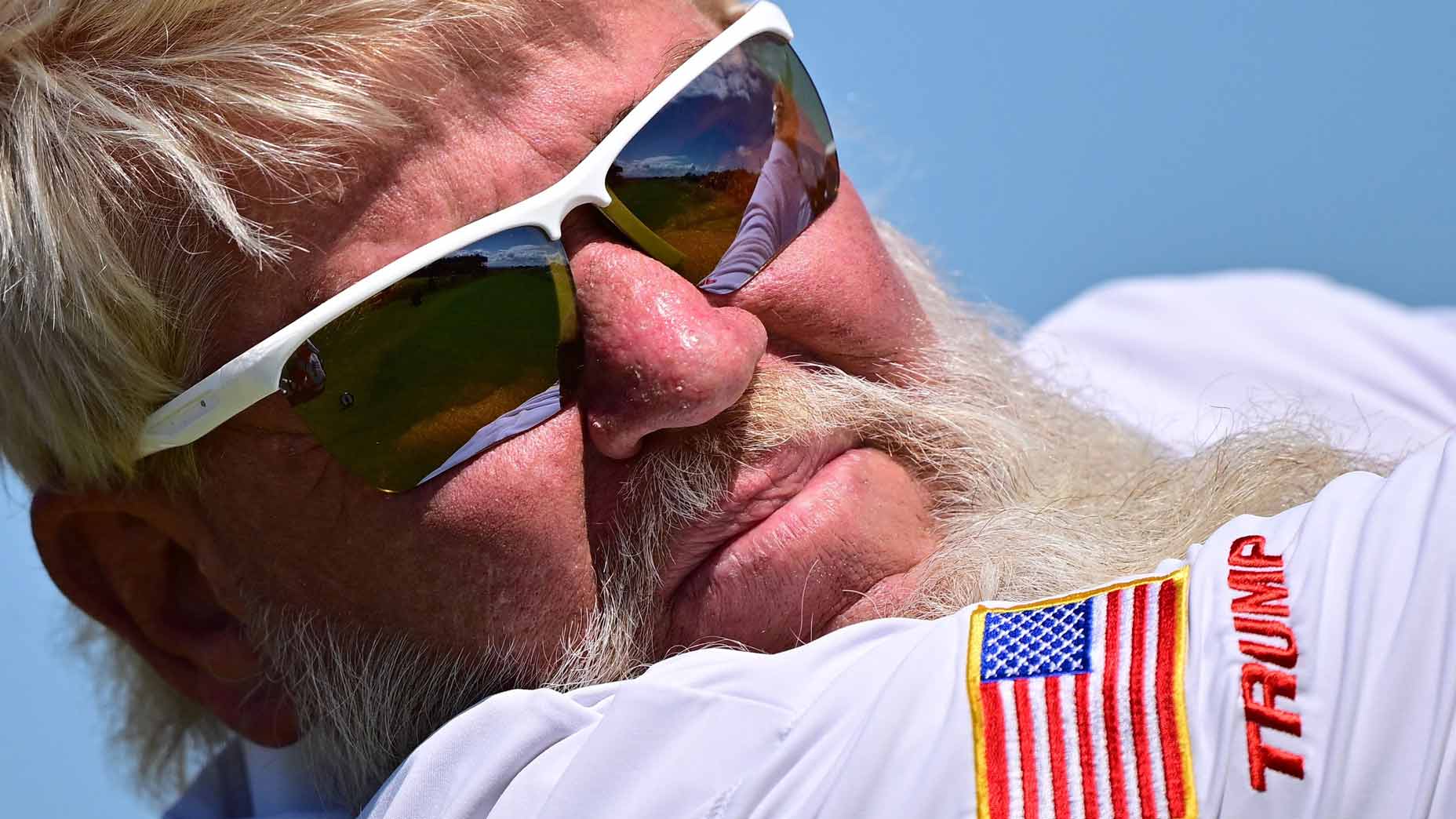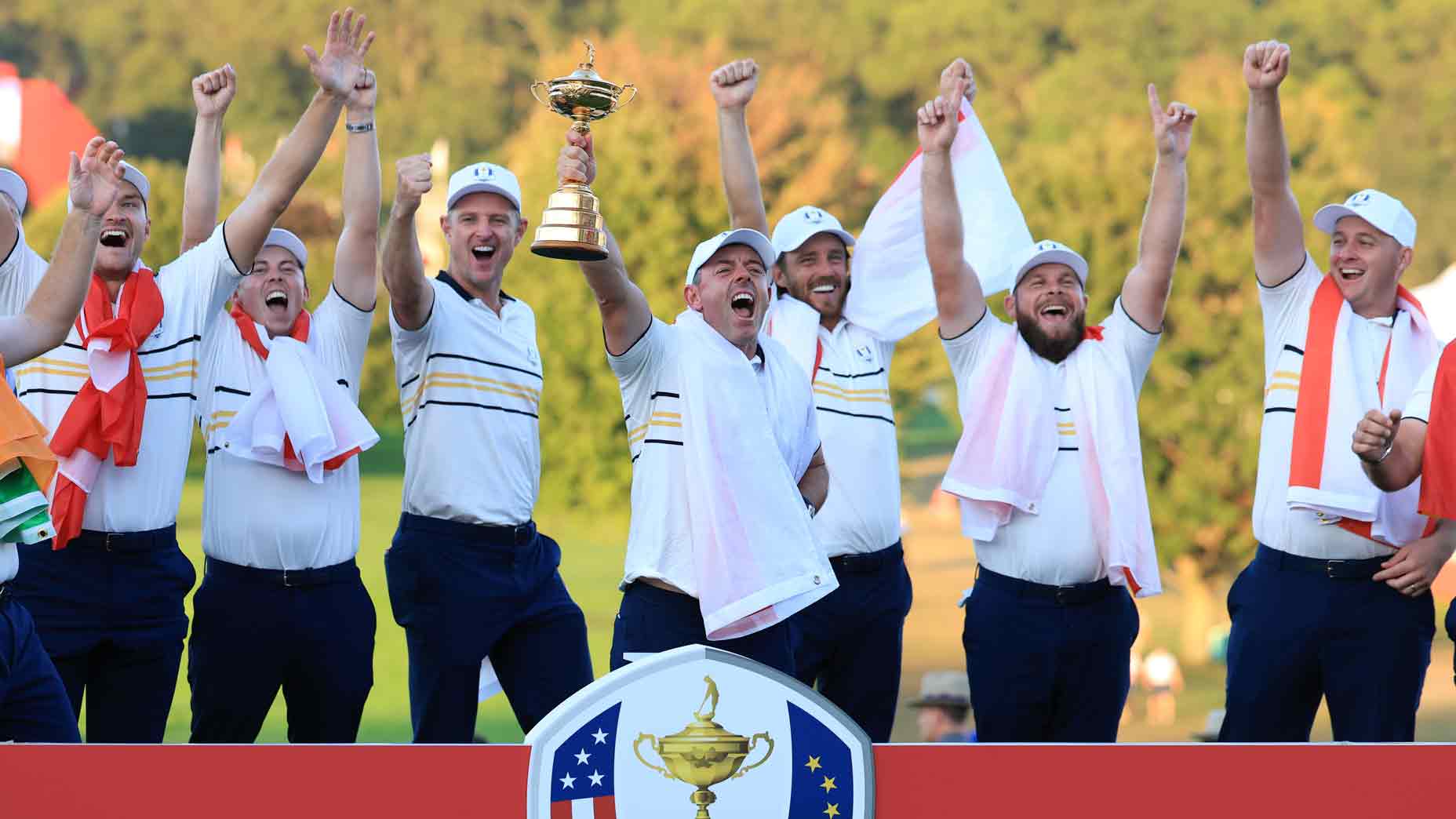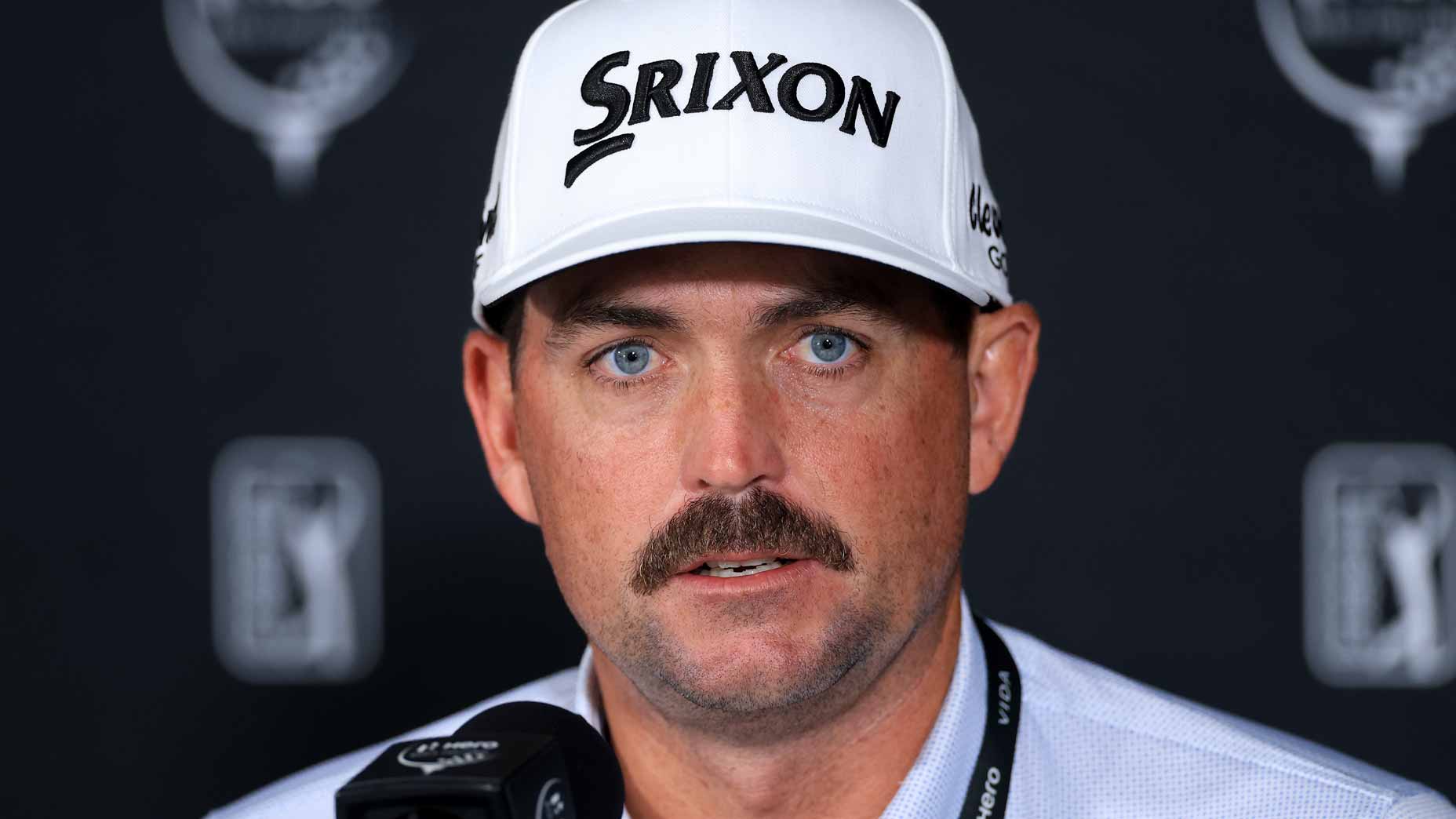CASARES, Spain — For an enormous place, the world has a funny way of making you feel small.
Like at this week’s Solheim Cup, which brought a chunk of the golf community halfway around the world to the golden shores of Spain’s Costa del Sol — or “Coast of the Sun” — a decidedly dreamy vacation enclave on the southern tip of Europe. It is not easy to reach Finca Cortesin, host of this week’s Europe-USA festivities, from the United States (for a traveler from New York on Wednesday, the work included one overnight flight, three cabs, a three-hour train and a one-mile walk). And it’s not easy for a person to make it here without finding a reminder of one’s own infinite smallness; there are seven billion others of us, after all, and traveling this far means encountering reminders of that scale along the way.
It might slap you awake from your redeye, as your plane arrives in a place where your regular life is as foreign as the misshapen currency that now fills your wallet. Or lull you to sleep, as the jetlag and sensory assault slowly overwhelm you. More likely it will humble you into silence, particularly when it occurs to you that you and your newly appointed cab driver will not make small talk because neither of you possesses the language skills to properly communicate. You will both smile embarrassedly as you try to explain your decision to visit his home country until, after many failed phantom golf swings, you mention the one name that finally resonates: Seve.
These reminders of our unimportance are an essential piece of our existence — with self-awareness comes perspective. Only now do we remember the work of being human starts with community. We are very little without it; and it is very little without us.
This week’s Solheim Cup is noticeably absent a large chunk of the golf community, most of which will travel just a few hours east to Rome beginning next week for the Ryder Cup. That biennial match play event will have golf’s undivided attention for the week, a glut of sponsor and hospitality support, and the sort of breathless, wall-to-wall coverage reserved for only the sport’s biggest events. This one … well, won’t.
This has always been a reality for the Solheim Cup, but it has come into greater focus in 2023, when Covid schedule flip-flopping put the two Cups within a few days — and a few hours — of one another. For the first time, the golf community had the opportunity to witness men’s and women’s team golf in neighboring European venues, back-to-back. Or, stated more plainly, for the first time, the golf community had the opportunity to present men’s and women’s team golf in a light that would be very appealing to big-money sponsors and television networks.
So where is everybody? And why didn’t that happen? In Spain, the answers aren’t adding up.
There has been a noticeable undercurrent of disappointment from those at the Solheim Cup about the lack of juice behind the team golf double-feature. As those around the grounds see it, men’s and women’s golf had been gifted a rare chance at its own kind of Barbenheimer — a two-pronged PR campaign that could have the shared impact of lifting both events. Instead, they say, men’s golf didn’t respond to their calls.
“I thought this could have been marketed together as two weeks in Europe, two Cups for play. We tried to do a little bit with the guys and just weren’t really able to move things along the way I would have liked,” U.S. captain Stacy Lewis said Wednesday. “I think it was a missed opportunity for the sport of golf. One-thousand percent, [it was a missed opportunity.]”
Best 1st hole…ever? 6 early Solheim Cup observations from on the groundBy: James Colgan and Sean Zak
You don’t have to look very far around Finca Cortesin to know that much is true. There is nary a mention of the Ryder Cup anywhere on property, nor has any of the build-up around either of the two events featured much nod toward the other. About the closest overlap between the two is 23-year-old Ludvig Aberg, who will cheer on the Euros in the Solheim Cup before flying to Rome next week to compete for them in his first Ryder Cup. Aberg attended elementary school alongside two players on the European Solheim Cup team (Maja Stark and Linn Grant), and his caddie, Jack Clarke, is engaged to Euro star Madelene Sagstrom. There are no other European competitors in attendance, nor any Americans.
Lewis says some of the estrangement between the twin events has to do with Ryder Cup sponsorship and financial entanglements, which were decided well before any joint campaign would have begun in earnest. But that reasoning does little to quiet her disappointment in the outcome, particularly given the rarity of these events working together so closely in the golf schedule.
“I wish that people could get the sponsorship things out of their head,” she said. “Let’s figure out how we can work together, because this may not ever happen again.”
Lewis’ frustration is shared by some of her competitors on the American side, who realize what the influence of the men’s game — to say nothing of the Ryder Cup — could do for women’s golf.
“I think it’s very cool that both events are together,” the U.S.’s Angel Yin told GOLF.com Thursday. “But I think it would be cooler if we did something together.”
It’s hard for Yin to say exactly how that partnership would look, considering the business obligations for both sides, but it’s not hard to know what the outcome would be.
“It would be very cool for the LPGA and the PGA to do something together,” Yin said. “If there was any collaboration, it would be very cool for the game, for golf.”
Yin raises a point shared by a few competitors on the American side: golf could use the PR. It has been a bruising two years for the sport in the public eye — a time battered by Saudi investment and splitting tours — which makes the decision to avoid a partnership all the more perplexing. In a moment when every conversation around men’s professional golf self-obsesses about “growing the game internationally,” men’s professional golf is actively passing on a glorious opportunity to do precisely that.
“It is disappointing,” Yin admitted. “But what can you do? It’s above my paygrade.”
In some ways, though, it isn’t. Golf is the chosen community for all those involved in the next two weeks worth of events, a fact that is as true for the players competing as it is for the fans who watch along on television. And being part of any community requires work, usually the kind that comes without any obvious benefit.
“I think fans are going to have two great weeks of golf,” Nelly Korda said Thursday. “I would have to see the statistics of it, but I think for two weeks having something that they don’t see every year, a match play event, would be fun to see, especially because I think it will bring more eyes and more attention to the game of golf.”
It felt intentional that Korda shoved men’s and women’s golf under the same umbrella in her answer, because the truth is that it’s not only the women who suffer when the work isn’t done.
“I tried. I tried really hard, actually. I probably spent more time on it than I should have,” Lewis, still clearly agitated, said on Wednesday. “I don’t know — I just would like to see it for the good of the game. It’s not to further women’s golf. Let’s further the game of golf in general.”
This, it seems, is the point: in a very big world, golf can be as big as we want it to be.
Or, for that matter, as small.











